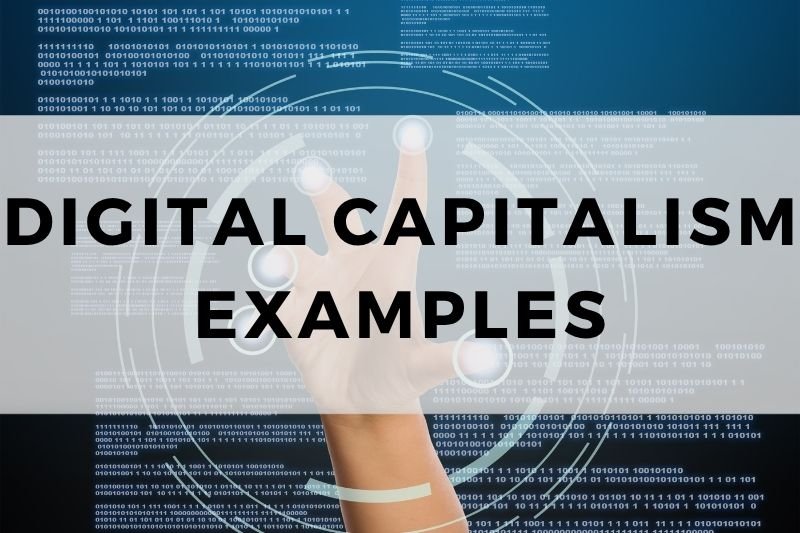
What happens when the internet becomes the new marketplace and data replaces oil? This is the reality of digital capitalism—a system where technology giants shape economic behavior, consumer habits, and labor markets. Traditional capitalism has transformed into something faster, more connected, and algorithmically driven. From personalized ads to gig work platforms, digital capitalism touches nearly every aspect of modern life. Understanding how it works means looking at the companies that drive it. In this article, we explore some of the most striking real-world examples that show how digital capitalism plays out in today’s economy.
What Is Digital Capitalism?
Digital capitalism refers to an economic system where digital technologies and platforms drive the creation, exchange, and control of value. It relies on data, algorithms, and networks rather than just physical goods or traditional labor. Tech giants like Amazon, Google, and Facebook exemplify this shift by monetizing user data, automating services, and reshaping consumer behavior through artificial intelligence.
At its core, digital capitalism transforms data into a commodity and platforms into powerful economic gatekeepers. This system enables scalability, personalization, and constant connectivity—creating efficiencies but also raising concerns about monopolies, surveillance, and labor precarity. Unlike industrial capitalism, digital capitalism moves at high speed and often without the same regulatory guardrails, making it both dynamic and disruptive.
Real-World Examples of Digital Capitalism
#1. Amazon’s Algorithm-Driven Marketplace
Amazon uses algorithms to control product visibility, pricing, and delivery logistics. Sellers compete for top placement on search results, often based on ad spend and user reviews. Its recommendation engine nudges customers toward purchases they didn’t intend to make. Amazon collects vast data on browsing, purchases, and consumer behavior, refining its systems in real-time. Amazon’s platform doesn’t just sell products—it controls the terms of competition, pricing, and visibility through algorithms. This gives Amazon massive leverage over both buyers and third-party sellers. It not only shapes what people buy but also how entire markets function. As more sellers rely on Amazon to reach customers, the platform’s central role in e-commerce deepens, turning it into a near-monopolistic gatekeeper.
#2. Google’s Attention Economy
Google’s business model revolves around collecting user data and selling targeted advertising. Every search, click, and video watched on YouTube feeds into a system optimized for engagement. Its PageRank algorithm shapes what information gets seen and by whom. Google monetizes attention by turning user behavior into ad revenue through surveillance-based targeting. This creates incentives to prioritize content that’s attention-grabbing rather than informative. Google controls not just search results but access to knowledge and traffic flow for websites. Its dominant share in search and advertising lets it shape markets and public discourse. Digital capitalism here turns personal data into profit while centralizing power in a platform few can afford to ignore.
#3. Facebook (Meta) and the Social Data Machine
Facebook (Meta) builds value by extracting behavioral data from its billions of users. Likes, comments, shares, and clicks are monitored to personalize feeds and optimize ad delivery. The platform creates addictive loops using psychological triggers to increase screen time. Meta turns social interactions into monetizable data, profiting from surveillance and manipulation of user behavior. Algorithms decide what users see, reinforcing engagement and polarizing content. Businesses depend on Facebook ads to reach audiences, making it a crucial marketing channel. As digital labor, users generate content and data without pay, fueling the platform’s growth. This model reveals how social platforms commodify attention and reshape social life into a profitable data stream.
#4. Uber’s Gig Economy Model
Uber uses digital platforms to connect drivers with passengers, bypassing traditional employment structures. Drivers are classified as independent contractors, not employees, avoiding benefits and labor protections. Uber’s platform extracts value from labor while shifting risk onto workers and automating management through algorithms. Prices fluctuate through dynamic pricing, and drivers are rated and filtered by machine-learning systems. This creates a highly controlled but flexible labor force. Uber’s digital infrastructure enables global expansion without owning cars or hiring drivers directly. Its model exemplifies how digital capitalism decentralizes labor responsibility while centralizing profit through platform control and data-driven oversight.
#5. Apple’s Ecosystem and App Store Control
Apple tightly controls its digital ecosystem, from hardware to software distribution. Its App Store is the exclusive gateway for apps on iOS devices, where developers must comply with strict guidelines and pay a 15–30% commission on sales. Apple monetizes digital access by controlling the distribution channel and extracting value from developers through platform dependence. It decides what apps are allowed, how they appear, and what user data can be accessed. This walled garden model ensures user loyalty while securing revenue streams from subscriptions, apps, and in-app purchases. Apple’s strategy illustrates how digital capitalism consolidates power through ecosystem lock-in and monetization of access rather than just product sales.
Conclusion
Digital capitalism is more than a trend—it’s a structural shift in how economies function and value is created. From algorithmic marketplaces to data-driven advertising, today’s biggest tech platforms reshape commerce, labor, and even social interactions. The examples of Amazon, Google, Meta, Uber, and Apple reveal how digital tools can generate enormous wealth while raising serious questions about power, equity, and accountability. Understanding these examples helps us see both the opportunities and the challenges of this new economic era. As digital capitalism continues to evolve, societies must decide how to manage its influence and ensure broader benefits.
